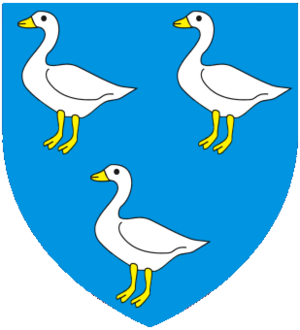Brian Walton (bishop) facts for kids
Quick facts for kids The Right Reverend Brian Walton |
|
|---|---|
| Bishop of Chester | |

Engraving by Wenceslaus Hollar (1654)
|
|
| Orders | |
| Consecration | 2 December 1660 by Accepted Frewen |
| Personal details | |
| Born | 1600 Seymour, Yorkshire |
| Died | 29 November 1661 (aged 60–61) |
| Denomination | Anglican |
| Spouse | Anne Claxton Jane Fuller |
| Occupation | Priest, scholar |
| Alma mater | Cambridge |
Brian Walton (1600–29 November 1661) was an English Anglican priest and scholar. He is best known for creating a special Bible called the Polyglot Bible.
Contents
Brian Walton's Life
Brian Walton was born in 1600 in Seymour, a place in Yorkshire, England. He went to school at the Royal Grammar School in Newcastle. Later, he studied at Magdalene College and Peterhouse at Cambridge University. He earned his Master of Arts degree in 1623.
After college, Walton worked as a school teacher and then as a church assistant. In 1626, he became a rector (a main priest) in London and Essex. He was involved in some disagreements about church payments. Because of this, he faced some accusations in parliament, which led to him losing some of his church positions for a while.
Brian Walton was buried in Old St Paul's Cathedral in London. Sadly, his grave was destroyed in the Great Fire of London in 1666. Today, his name is on a monument in the cathedral's crypt, honoring important people buried there whose graves were lost.
The Amazing Polyglot Bible
Brian Walton's most famous work is his Polyglot Bible. A "polyglot" means "many languages." This Bible was special because it presented the Bible's text in nine different languages side-by-side.
Creating the Polyglot Bible
Walton started planning the Polyglot Bible in 1652. It was a huge project, published in six large books. The first book came out in 1654, and the last three were finished by 1657.
The nine languages used in the Bible were:
Walton had many smart people helping him. Some of his famous helpers included James Ussher, John Lightfoot, and Edward Pococke. This huge project was the first in England to be paid for by "subscription." This meant people paid money in advance to help fund the printing.
Support and Recognition
Even though England was going through political changes, Walton's project received support. The paper used for the Bible was made free of tax. Even Oliver Cromwell, who was a powerful leader at the time, supported the work.
When the king returned to power, Walton changed the Bible's introduction to show loyalty to the new king. Brian Walton himself was rewarded for his work. He was chosen to be the Bishop of Chester in 1660. He visited his diocese (church area) in 1661 and then returned to London, where he passed away.
Why the Polyglot Bible Was Important
The Polyglot Bible was a huge achievement. It showed how much hard work and good leadership Brian Walton had. The introductions to the Bible, called Prolegomena, also showed his great knowledge.
One scholar, Chisholm, said in 1911 that the Polyglot Bible was a "great monument of industry." He also noted that Walton's Prolegomena showed good judgment and learning. Walton also wrote a book called Considerator Considered (1659). This book was a reply to another scholar, John Owen, who worried that studying different Bible texts might lead people away from faith. Walton also wrote an Introductio ad lectionem linguarum orientalium (1654), which was a guide to learning Eastern languages to help people use the Polyglot Bible.
Manuscripts Used
To create his Polyglot Bible, Brian Walton used many old and important manuscripts. Some of these included:
- Codex Montfortianus
- Minuscule 47
- Minuscule 57
- Minuscule 96
- Minuscule 2818
See also


